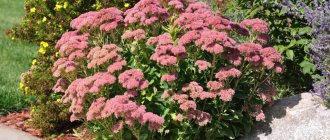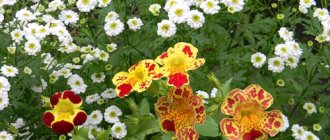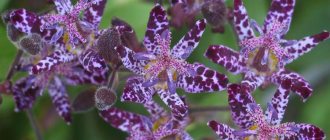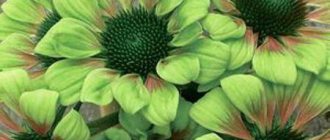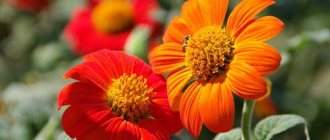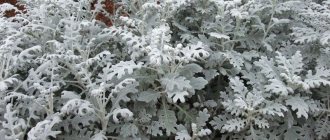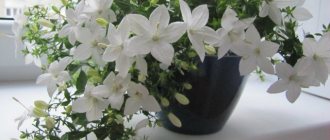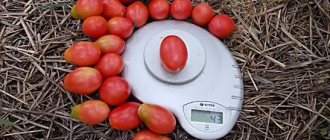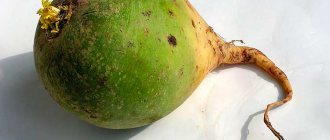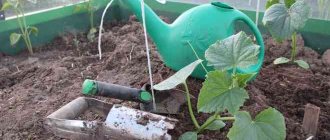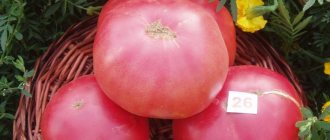Author: Natalya Category: Garden plants Published: February 08, 2019Republished: February 08, 2019Last edits: January 13, 2021
- When to plant
- Growing conditions
- How and when to collect seeds
- Alpine Armeria (Armeria alpina)
Armeria is a flowering perennial with very beautiful inflorescences that form from May until the onset of frost. Armeria is decorated with ridges, it is planted as a border for flower beds and garden paths. Armeria looks good in the vicinity of low-growing and ground cover plants, for example, saxifrage or awl-shaped phlox.
Armeria is often used to make bouquets, including winter ones.
- What types and varieties of Armeria are most in demand in garden culture?
- What is the best way to sow armeria?
- How to care for a plant during the season?
- How to prepare armyia for wintering?
You will get answers to all these questions by reading our article.
Planting and caring for armeria
- Planting: sowing seeds in the ground - before winter or in early March; sowing seeds for seedlings - at the end of February or early March, planting seedlings in the ground - from the second half of May.
- Lighting: bright sunlight, for turfy armeria - partial shade or bright diffused light.
- Soil: moist and light, sandy loam, acidic.
- Watering: moderate, more frequent in dry seasons.
- Fertilizing: before flowering, complete mineral fertilizer.
- Reproduction: seeds, cuttings and dividing the bush.
- Pests: aphids.
- Diseases: spotting.
Read more about growing armeria below.
flowers (Latin: Armeria) form a genus of herbaceous flowering perennial plants of the Vinaceae family, numbering more than ninety species in nature. The name "Armeria" may come from the combination of two Celtic words: "ar", which means "near, nearby", and "mor" - "sea". The validity of this assumption is confirmed by one of the common types of Armeria, which prefers to grow in coastal dunes. But there is also an opinion that “armeria” comes from the word “armoires” - this is the name of the bearded carnation in Old French, with which some types of armeria are similar. Under natural conditions, the Armeria flower is found in Eastern Europe, the Mediterranean, Mongolia, America and Siberia.
- Comfrey: cultivation, properties, types
Using flowers in landscape design
The culture is almost ideal for alpine slides and rock gardens. Wherever there are cracks in the stone in the area, armeria can be planted, and the combination of the gray and coldness of the stone with bright double flowers will always be successful.
Armeria can often surround artificial reservoirs, areas for quiet recreation, and border beds of other crops. In flower beds, the plant successfully coexists with the Carpathian bell and creeping phlox.
Armeria inflorescences on long peduncles, cut before blooming and dried, are used to create winter bouquets of dried flowers.
Photo: using armeria in landscape design - ideas for inspiration
When armeria is densely planted, a carpet is formed, the flowering of which can last from May to September
Armeria looks impressive among ground-blooded plants on lawns along paths
Low lush bushes of armeria also look great as single elements
Armeria goes well with sedums, saxifrage, creeping thyme, low phlox, and jasmine
Various types of armeria are used to border flower beds
Almost all varieties of Armeria take root remarkably well in crevices between stones
The ideal place for planting armeria turf is the eastern slope of an alpine hill, where it will be provided with sufficient shade and good drainage
Armeria is one of the best plants for creating a bright flower border.
Armeria is often planted along the edge of artificial reservoirs
Botanical description
The Armeria plant reaches a height of 15 to 60 cm. It has a short taproot, and numerous linear-lanceolate sessile entire leaves, collected in a basal rosette, form dense clumps - pillows. The stem is straight, smooth or pubescent. Small flowers of white, pink, purple and their shades are collected in capitate inflorescences. The fruit is single-seeded. Armeria flowering begins in May and ends at the end of summer.
The most popular species in culture is the seaside Armeria maritima. Growing seaside armeria is carried out in the same way as growing armeria of any other species, the only difference is that it is preferable for seaside armyia to grow near a reservoir.
Features of care
It is very easy to care for such a flower. Before flowering, it is recommended to add complete mineral fertilizer to the soil. After this, feed the plant in the same way 1 or 2 more times. Fading flowers must be picked off in a timely manner, and those flower stalks on which no more flowers will appear must also be removed. As a result of this, the preserved forces of the flower will be spent on the appearance of new buds. During the dry summer period, watering should be regular, but the soil should not be over-moistened. After the armeria turns 5 years old, you need to dig up the bush and divide it into parts, and then plant it. And then this procedure should be performed once every 2 or 3 years, otherwise the flower will grow.
Diseases and pests
The plant is highly resistant to various diseases and harmful insects. However, if the acidity of the soil is less than necessary, then the armeria may begin to have problems with spotting or aphids. To combat such scourges, radical pruning of stems is used.
Growing Armeria from seeds
How to sow seeds
Seed propagation of Armeria is carried out both by seedlings and without seedlings. Armeria seeds are sown in open ground at the end of autumn (so that they undergo natural stratification over the winter) or in the spring, at the beginning of March. Armeria seeds are sown for seedlings in greenhouses at the end of February or beginning of March. In addition, Armeria reproduces well by self-sowing. Wherever you sow the Armeria seeds - directly into the ground or into a container for seedlings - plant them shallowly, sprinkling them with a half-centimeter layer of soil on top. The germination rate of Armeria seeds is high.
Seedling care
If you want to get healthy shoots, keep the Armeria seeds in the refrigerator for a week, and before sowing, soak them for 6-8 hours in warm water. Armeria seeds sown in boxes and lightly sprinkled with soil are kept in a warm, bright place. When the seedlings reach a height of several centimeters and they have a pair of true leaves, the seedlings dive into greenhouses and grow until they become stronger.
5.Reproduction
5.1.Growing Armeria from seeds
This perennial can be grown quite easily from seeds. When kept in a garden plot under mature plants, self-seeding often occurs.
For seed propagation, you can use your own collected planting material. To form seeds, one or more flower stalks are left on the plant until fully ripened. To prevent the seeds from leaving the inflorescence on their own, you should wrap it in a bandage or wear a simple thin sock.
↑ Up,
After ripening, the seeds are collected and lightly dried in a warm and well-ventilated room for 2 - 3 days. Store seeds in fabric bags or paper bags in a dry place.
When propagating varietal plants, the resulting daughter rosettes may not inherit all the attractiveness of their parents - they should be propagated vegetatively - by division or cuttings. Species plants reproduce successfully with the help of seeds.
Planting material can be planted either directly in open ground or as seedlings at home. Before sowing, Armeria seeds are soaked in warm water with the addition of growth stimulants overnight.
↑ Up,
5.1.1. Sowing in open ground in autumn
When sown directly outside, the seeds will undergo additional stratification under natural conditions. For sowing, it is worth choosing a time so that the first shoots do not have time to appear before the onset of frost. The best month for landing in the Middle Zone will be November.
A small plot of land is loosened and shallow furrows are prepared, where the seeds are sown. The planting material is covered with a small layer of soil on top and watered.
↑ Up,
During the first warm weeks of next spring, you will notice the shoots of Armeria. When such plants get a little stronger, they are planted.
It is fashionable to try to plant flower seeds in the spring - however, in the absence of stratification, their germination rate will be low.
↑ Up,
5.1.2.Growing seedlings at home
Sowing of seedlings is carried out at the end of winter or early spring - in early March. First, the seeds are placed in the vegetable compartment in the refrigerator for a couple of weeks so that they undergo a period of cool stratification, which will increase their germination.
The germination rate of fresh planting material is high and the plants sprout together. The first shoots, if certain agricultural techniques are followed, can be seen 2 - 3 weeks after sowing.
↑ Up,
For sowing, small cups or peat pots are prepared, drainage holes are made at the bottom and a layer of expanded clay or other drainage material is placed. You can sow in seedling boxes.
Fill the pots with a mixture of peat and river sand, taken in equal proportions. The surface of the substrate is thoroughly moistened using a spray bottle with warm water. Seeds are sown on the surface of the ground and covered with a layer of soil about 5 mm thick.
↑ Up,
Containers with seedlings are covered with a transparent cover to maintain high air humidity and placed in a warm place with good lighting. The air temperature in the room should be about 16 - 20 degrees. Direct sunlight should not fall on young bushes - only reflected light is needed. The cover is removed daily and the condensation that has accumulated on its surface during the day is removed. Gradually the time of such ventilation is increased. With the appearance of the first shoots, the cover is removed completely.
When grown in a greenhouse or container, the plants peak with the appearance of the first 2 - 3 true leaves, carrying the bushes carefully, along with a lump of earth. After planting in open ground, the first flowering will occur in the same year, although it will not be very abundant.
↑ Up,
5.2.Dividing the bush
Adult bushes of armeria are periodically rejuvenated by division - the fact is that overgrown plants over time can expose the center and become unattractive. Plant division is the simplest and most effective method of propagating this bush and is carried out on average every 3 to 5 years.
↑ Up,
The division is carried out after flowering - the bushes are dug up along with a lump of earth, then the root system is shaken off from the remaining soil. The roots are carefully examined and old and diseased sections are removed, and in this case the wound surface is sprinkled with charcoal powder or wood ash. Plants are cut into pieces in such a way that the result of this procedure is strong divisions with their own roots and a well-developed above-ground part.
Next, the young plants are planted and they begin to care for them like other armeria. Dividing can also be done in early spring - however, this may affect flowering in the current year. In the spring months, the flower will take root in a new place, and the first buds will appear only in the fall.
↑ Up,
5.3.Propagation by cuttings
In this case, young root rosettes are used as cuttings, which from time to time will form near the mother bushes. Such rosettes can be carefully separated from the main plant even when they do not have their own roots.
Rosettes are planted in small cups with soil or directly into the ground, however, in the first weeks before the formation of the root system, such plants will require careful care. The bushes are lightly sprinkled with soil, which is kept evenly moist but not waterlogged throughout.
To create a greenhouse effect, the flowers are covered with a plastic cap, which is removed daily and the outlets are ventilated.
After some time, the first signs of new growth can be seen on such specimens - this will mean that the first roots have appeared under the ground.
↑ Up,
Planting armeria in open ground
When to plant
As soon as you are sure that the leaves of the Armeria in the greenhouse have become strong and strong, and the frosts have completely receded, you can start transplanting the seedlings into open ground. Determine the warmest and sunniest area for the armeria with light, slightly moist, acidic soil - sandy or rocky soils are most suitable. If the soil is limed, try to correct this before planting, as Armeria does not tolerate lime. To neutralize, add ammonium nitrate to the soil under digging or spill the area with a solution of acetic acid.
How to plant
Two weeks before planting, thoroughly loosen the soil on the site and apply organic fertilizers. If you decide to grow armeria as solo plants, they are planted in holes at a distance of 30-40 cm from each other and from other plants, placing the seedling in such a way that the rosette of leaves is not lowered into the ground and the root collar is shallow. The holes are filled with earth, the soil is compacted around the seedlings and the planting is watered.
- Aubrieta: growing from seeds, types and varieties
If you want Armeria to grow in a continuous carpet, then the seedlings need to be planted densely so that there is a distance of no more than 15-20 cm between the specimens, and not in holes, but in shallow trenches.
For the first three weeks, try to water the armeria often, but let the soil dry out between waterings. Armeria from seeds usually blooms the next year after planting. Armeria maritime is grown from seeds according to the same rules as any other species.
Reproduction
Armeria is a perennial. Having planted it once, you can admire the plant for more than one year. In addition to growing from seeds, cuttings and dividing the bush are also used.
Cuttings
The procedure can be carried out throughout the entire growing season. You need to take the root rosettes and sprinkle them with soil. If it's warm outside, they will quickly take root and settle down. If the weather is cool, then the cuttings can be covered with a glass jar, creating a greenhouse.
Dividing the bush
The procedure can be carried out when the armeria reaches 3 years of age. The bush is growing and requires rejuvenation. At the same time, it reproduces. At the beginning of spring or autumn, dig up the bush and divide it into equal parts. Remove damaged roots and stems. Pre-prepare the soil. Dig separate holes for each division. Bury them at a distance of 20-30 cm from each other.
As a rule, flowering with the vegetative method of propagation occurs in the second season. But if you plant a plant in the spring, then a small number of flowers may already appear closer to the autumn of the same year.
Armeria care
Growing conditions
Caring for an army is not difficult. Before it blooms, add complete mineral fertilizer to the soil as a top dressing, and then repeat the top dressing once or twice. Remove faded flowers in a timely manner and cut off flower stalks that no longer bear flowers, so that the plant directs all its energy to the formation of new buds. If the summer turns out to be dry, water the armeria, but try not to overdo it with moisture.
When the plant reaches five years of age, it must be dug up, divided into parts and planted, and then do this every 2-3 years, otherwise the armeria will grow. This is how armeria is planted and cared for. It's simple.
Pests and diseases
Armeria is not afraid of diseases or pests, but if it grows in insufficiently acidic soil, problems with aphids or spotting may arise, which are best dealt with by radical pruning of the shoots.
Autumn care, seed collection and wintering
Wilted inflorescences should be removed immediately after flowering. You need to leave only those flowers from which you plan to collect seeds. Although armeria reproduces well by self-sowing and dividing the bush. If you need to collect seeds, then the selected flowers, when they begin to fade, need to be tied with gauze. This will prevent the seeds from falling to the ground. When the seeds are ripe, they are poured onto paper and cleaned of impurities. They should be dried for some time and sown in the ground for the winter, or stored in a paper bag until spring.
Armeria overwinters under the snow; there is no need to dig it up. In southern and snowy regions there is no need to additionally cover the bushes. Soddy armeria must be hilled. Also, if winters are frosty and have little snow, then the plants need to be covered with spruce branches or peat. It is important to ensure that there is no accumulation of moisture near the armeria during the winter. This can lead to the death of the root system.
Armeria after flowering
How and when to collect seeds
There is no point in collecting seeds if armeria is already growing on your site - it reproduces well by self-sowing. In addition, an obligatory element of plant care is dividing the rhizomes and planting cuttings, so that you will always have plenty of planting material, and the sowing material sows itself.
If you want to share your armeria with someone, you can give away part of the cuttings when transplanting or cut cuttings. But if you absolutely need to have seeds, tie the fading inflorescence with gauze so that the ripened seeds do not fall to the ground, and when the inflorescence is dry, cut it off, shake the seeds onto a newspaper, clean them from the remains of the flowers and, after drying, pour them into a paper bag.
- Poppy: growing from seeds, types and varieties
Perennial armeria in winter
Armeria is a frost-resistant plant and can easily survive the winter without shelter, especially if there is a lot of snow in winter. The only exception is the soddy armeria, which must be covered. Dry peat, spruce branches and non-woven materials are used for covering. If, according to forecasts, the winter is expected to be snowless, it is better to cover other types of armeria with spruce branches: they will be warm and you will be at peace.
Pest and disease control
The main enemy of Armeria is aphids. She can literally stick to all the leaves. The plant practically dries up from such attacks. Therefore, it is recommended to periodically treat with insecticides. “Intavir”, “Karbofos” and others are known.
The disease can only be expressed by the appearance of rot or yellowing of leaves due to excessively wet soil. If no means of control help, then the affected areas are removed and immediately burned so as not to spread the disease or pests to other plants.
Plants reproduce well by self-sowing, so there is no point in collecting seeds. But, if you still need to collect them, then the ball of the inflorescence is tied with gauze and shaken. The collected seeds are dried and stored in paper.
Types and varieties
About ten types of Armeria have become widespread in culture. They are used in group plantings, ridges, rock gardens, rock gardens, and also as colored borders.
Alpine Armeria (Armeria alpina)
A perennial plant that forms dense cushions up to 30 cm in diameter and about 15 cm in height. Many of the linear-lanceolate leaves survive winter. The flowers are light pink, collected in axillary capitate inflorescences up to three centimeters in diameter. Peduncles up to 30 cm tall. It blooms for three to four weeks from June. Varieties:
- Alba - white armeria;
- Laucheana – armeria with carmine-red flowers;
- Rosea is a variety with bright pink flowers.
Pseudoarmeria, or beautiful armeria (Armeria pseudarmeria)
A plant reaching a height of 40 cm with rosettes of evergreen leaves and inflorescences of white or pink flowers. Blooms from early to late summer. Varieties:
- Joystick White - a variety with white spherical inflorescences, can be grown as an annual;
- Thrift is a low-growing variety with a height of only 20 cm;
- Red Planet is a perennial with red balls of inflorescences on peduncles up to 35 cm tall;
- Bees Ruby is a bright pink armeria up to 60 cm tall.
Armeria maritima
Grows naturally on sea coasts. Its height is no more than 20 cm, the diameter of the rosette is the same. The leaves are narrow, linear, flat, blue-green in color. Flowers in capitate inflorescences are pink-purple, covered with filmy bracts. It blooms in May and fades in about seventy days. Sometimes it blooms again in the fall. Varieties:
- Armeria louisiana is a variety of Armeria maritime with pink flowers;
- Dusseldorf Stolz - variety with dark red flowers;
- Vindictive – red armeria;
- Bloodstone - Armeria dark red.
Soddy Armeria, or juniper-leaved Armeria (Armeria juniperifolia = Armeria cespitosa)
Originating from the highlands of Spain and Portugal, it is a perennial up to 15 cm high with narrow linear leaves collected in a rosette up to 20 cm in diameter. Red or pink flowers in capitate inflorescences are framed by membranous bracts, peduncles up to 6 cm tall. The flowering is so abundant that sometimes the leaves of the Armeria are not visible because of the flowers with bracts. It blooms for forty to fifty days from July. Does not tolerate stagnation of moisture in the roots. A popular hybrid is Armeria turf and Armeria seaside called Armeria Zundermann. Varieties of Armeria turf:
- Brno - a low-growing variety with purple double flowers;
- Bevan's Variety - double flowers, pale pink.
Armeria welwitschii (Armeria welwitschii)
One of the tallest types of Armeria - up to 35 cm in height. The leaves are large, reaching a length of 10 and a width of 5 cm. Pink flowers up to 2 cm in diameter form a capitate inflorescence. Flowering is abundant and long from June until the beginning of winter. This species requires calcium-enriched soil.
Common Armeria, garden (Armeria vulgaris)
Grows in height up to 60 cm, linear, entire leaves reach 12.5 cm in length and 1 cm in width. The bare peduncles are crowned with capitate inflorescences of carmine-pink fragrant flowers, of which there can be up to 40 on one plant.
Beautiful Armeria (Armeria formosa)
Forms compact rosettes of narrow-linear evergreen leaves. Stems are rigid, rounded, erect. Inflorescences up to 5 cm in diameter, white, red or pink, bloom profusely until October.
In addition to the listed types of Armeria, Japanese, Siberian, spiny, bulbous, Arctic and others are also known.
General characteristics of the coastal army
Armeria (Latin “Armeria”) is a perennial and herbaceous plant. Belongs to the flowering genus and the Svinchatkov family. According to one version, the name of the plant is Celtic, translated as “near the sea.”
Forms a densely growing bush with a diameter of up to 40 - 50 cm with bright pink, white and lilac fluffy flowers, not very tall - from 20 to 60 cm.
The taproot is quite short, and the stems, slightly pubescent or smooth, form a dense rosette. The leaves are simple in shape, linear-lanceolate, entire. Flowers consisting of 5 petals form a capitate inflorescence.
They are collected in 5 sepals, which grow together into a cup that has a tubular shape. There are 5 stamens arranged in a simple circle. Flowers in one cup are both male and female. The fruit consists of one seed.
In nature, it grows over fairly large areas, including North and South America, Europe, western Asia, and northern Africa. It lives in arctic and coastal areas, but can change its habitat. Therefore, scientists even distinguish several subspecies.
There are about 95 species around the world: alpine, spiny, arctic, sand, bulbous and many others. We are considering the most popular in our area - seaside armeria.
Nowadays it is actively used as an ornamental garden plant. Looks stylish and impressive in stone gardens, rock gardens and just in flower beds. Thanks to its perfectly shaped bush, resembling a ball of dark green and bluish leaves with bright flowers, this plant will decorate any flower garden from April to October.
Interesting: Armeria belongs to a small class of plants - metallophytes, which grow on soils contaminated with toxic heavy metals: zinc, cadmium, lead, and cleanse the soil.
Armeria seaside is quite capricious to care for, but it is increasingly gaining popularity. The most famous varieties:
- Dusseldorf Stolz.
- Bloodstone.
- Vindictive.
- Louisiana.
- Alba.
- Solendence perfect.
- Rubra.
- Roshi compacta.
Armeria maritime can be seen on the shores of the Mediterranean Sea, Northern and Western Europe. One of its frequent habitats is near water bodies.
